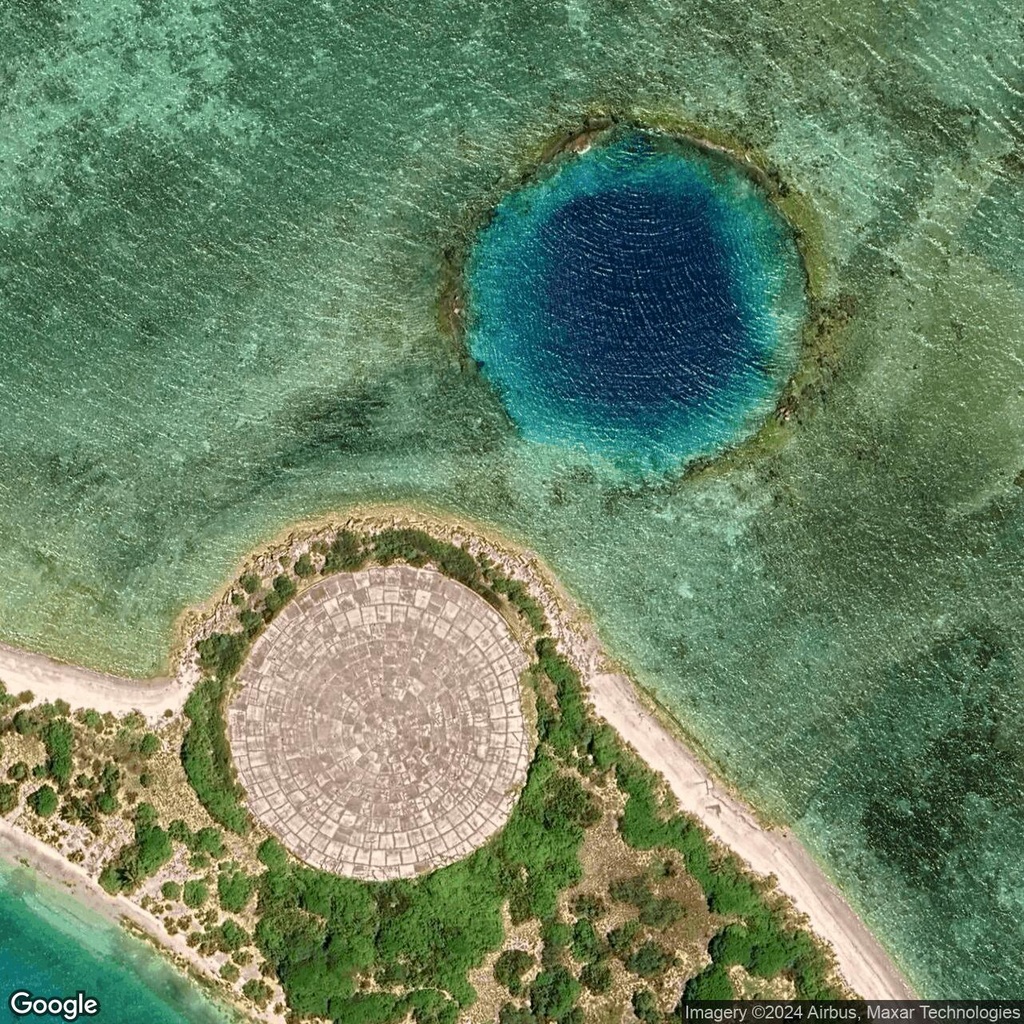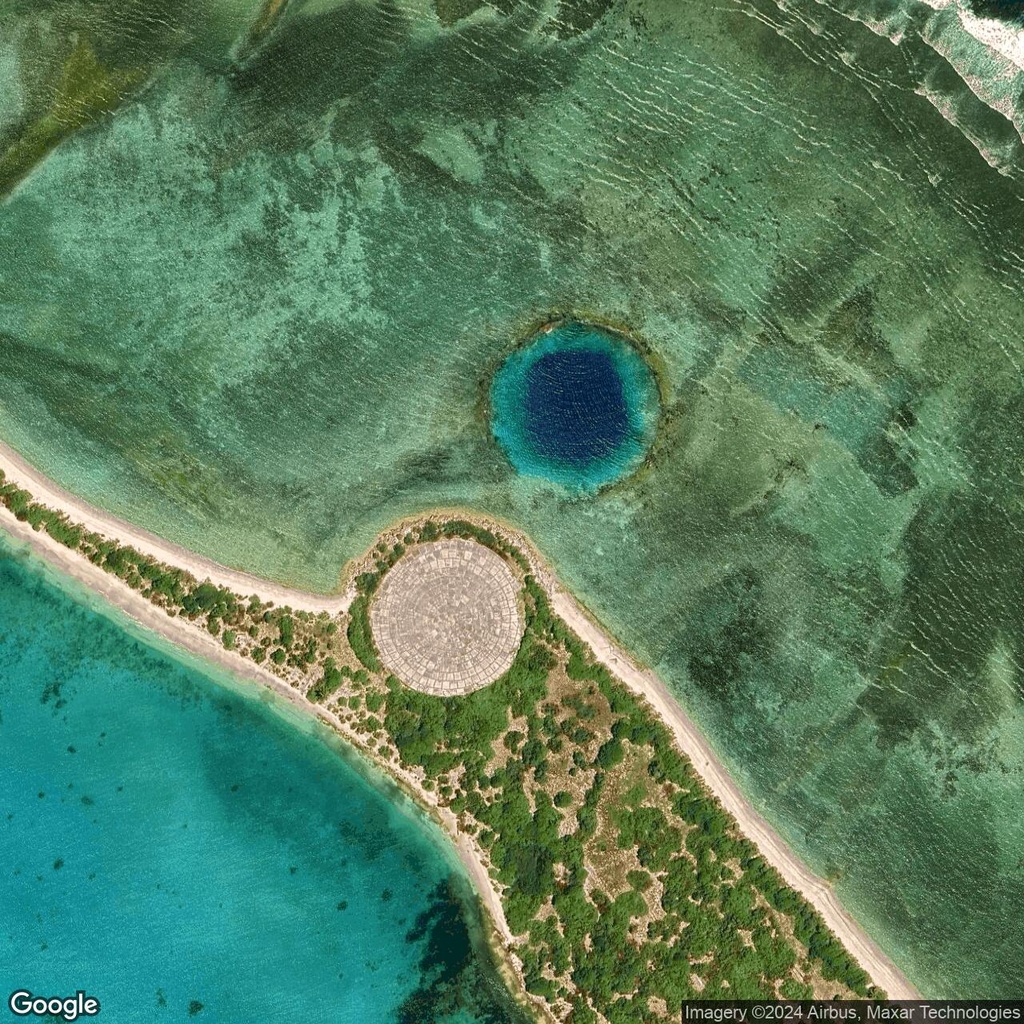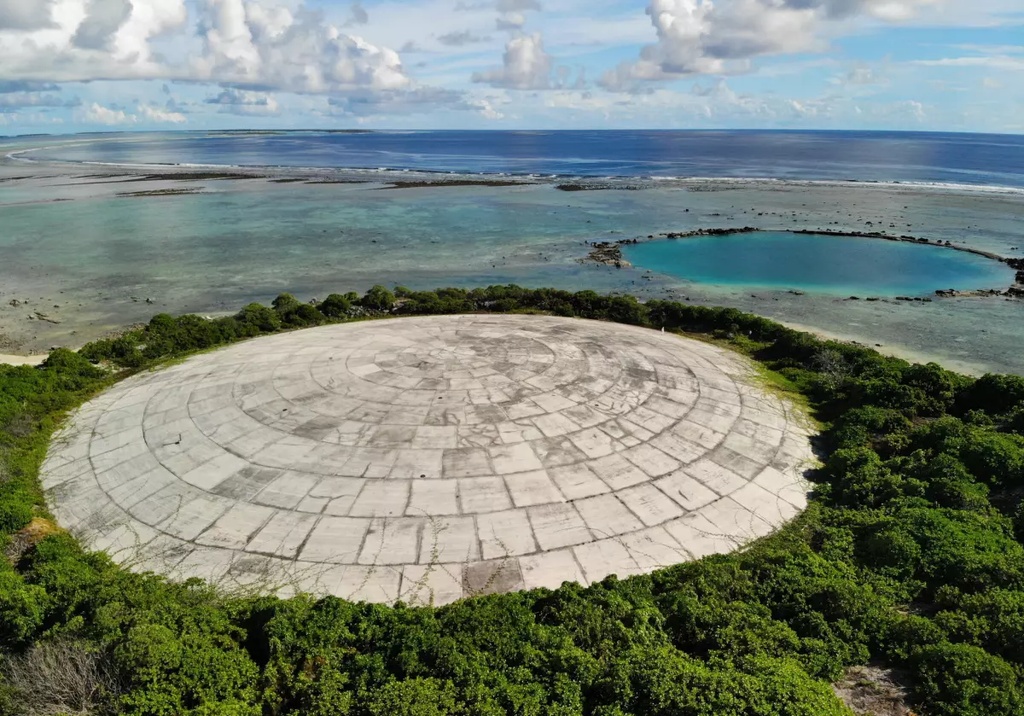Nuclear Sarcophagus: A Radioactive Legacy in the Pacific
| Location: | Enewetak Atoll Marshall Islands |
|---|---|
| Coordinates: | Latitude, Longitude 11.5531934, 162.3476383 |
The Runit Dome: A Containment of Catastrophe
Located on Runit Island, part of the Enewetak Atoll in the Marshall Islands, the Runit Dome, also known as Cactus Dome or locally as "The Tomb", stands as a haunting relic of nuclear testing. This concrete structure, measuring 115 meters (377 feet) in diameter and 46 centimeters (18 inches) thick, encapsulates approximately 73,000 cubic meters (95,000 cubic yards) of radioactive debris, including the highly toxic plutonium-239.
The History Behind "The Tomb"
Between 1946 and 1958, the United States conducted extensive nuclear testing at the Enewetak Atoll, leaving the islands heavily contaminated. As part of a cleanup effort in the 1970s:
- Debris Collection: Radioactive soil and materials from nearby islands were gathered and deposited into a nuclear test crater on Runit Island.
- Encapsulation: A concrete dome, now known as the Runit Dome, was constructed to seal the materials at sea level, creating a temporary solution for containing the contamination.
Environmental and Structural Concerns
The Runit Dome was never intended to be a permanent fix, and modern evaluations highlight significant risks:
- Cracks and Weaknesses: The structure has developed cracks, raising fears of potential radioactive leakage.
- Rising Sea Levels: The Marshall Islands face the threat of climate change, with rising sea levels potentially breaching the dome and dispersing radioactive material into the Pacific Ocean.
- Health and Ecological Impact: The long-term effects on marine ecosystems and local communities remain a critical concern.
A Symbol of the Nuclear Age
Known as "The Tomb", the Runit Dome serves as both a containment structure and a stark reminder of the environmental consequences of nuclear testing. It encapsulates the challenges of managing radioactive waste and the legacy of Cold War-era weaponry.
A Pacific Time Bomb?
With its aging infrastructure and vulnerability to climate change, the Runit Dome remains a focal point for environmentalists, scientists, and historians. Its future is uncertain, leaving many to question how long this fragile barrier can hold back one of the most toxic legacies of the nuclear age.




Comments:
No comments yet.